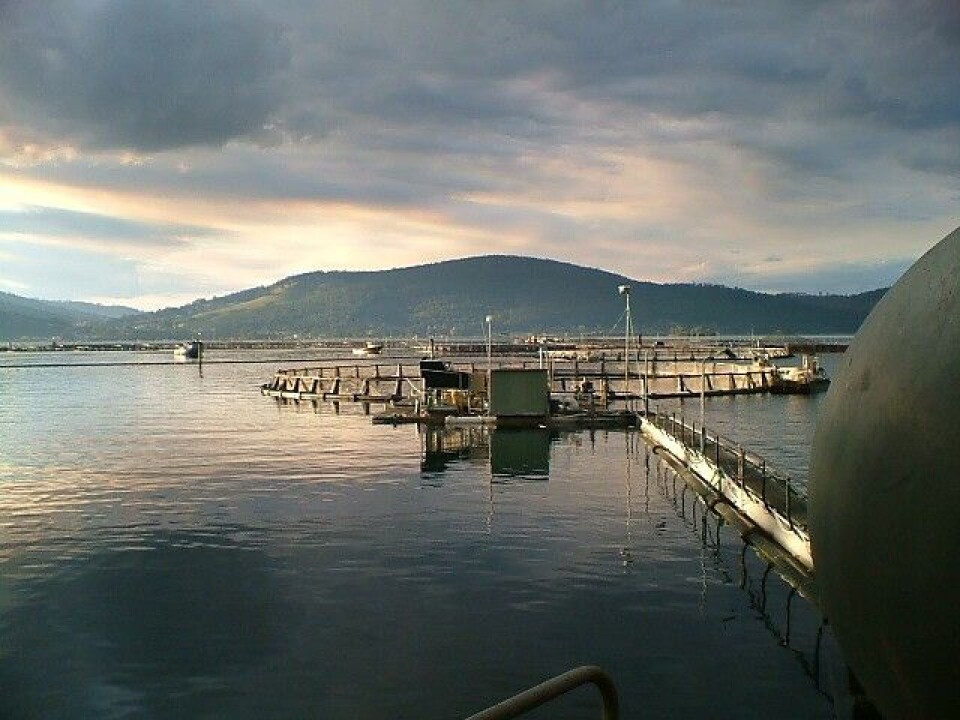
New Zealand set for aquaculture expansion
While industry opponents are starting to rattle their sabres in anticipated opposition to the planned expansion of the country’s fish and shellfish farming industry, aquaculture export volumes increased by 3.8% to 45,031 tonnes during the year ending December 2011, and total aquaculture export earnings increased by 12.0% to $307.4 million (~€190 million). Currently aquaculture export species are limited to green-lipped mussels, salmon and oysters. With respect to the largest producer of farmed salmon in the land, the Marlborough Express describes its expansion plans;
New Zealand King Salmon's economic impact on the Marlborough economy is predicted to triple if it goes ahead with its proposed expansion in the Marlborough Sounds. Auckland company Market Economics has written a report supporting an application by King Salmon to the Environmental Protection Authority to develop eight new sites in the Marlborough Sounds and convert one mussel farm to a salmon farm. Once the new farms and a signalled Picton factory were up and running, money flowing into the Marlborough economy from King Salmon operations could increase from $30 million (~New Zealand King Salmon's economic impact on the Marlborough economy is predicted to triple if it goes ahead with its proposed expansion in the Marlborough Sounds.
Auckland company Market Economics has written a report supporting an application by King Salmon to the Environmental Protection Authority to develop eight new sites in the Marlborough Sounds and convert one mussel farm to a salmon farm. Once the new farms and a signalled Picton factory were up and running, money flowing into the Marlborough economy from King Salmon operations could increase from $30 million (~€18.5 million) per year in 2010 to $95m (~€58.7m) in 2016, the report says. The forecasts presumed King Salmon would build a processing plant in Picton once production exceeded 15,000 tonnes, probably in 2014. This is flagged, but not covered in the application.
Fish from the proposed farms would start to come on-stream in 2014 and the business could reach full production by 2020. The forecasts presumed King Salmon would build a processing plant in Picton once production exceeded 15,000 tonnes, probably in 2014. This is flagged, but not covered in the application.
In the meantime, the umbrella organization for the business, Aquaculture New Zealand (AQNZ) recently announced in a Press Release that it has appointed Gary Hooper its new Chief Executive;
AQNZ Chairman Peter Vitasovich yesterday announced Gary would take on the leadership role after three and a half years as the organisation’s marketing director. “Gary has worked closely with many of the sector’s stakeholders in the area of international market development and has a strong understanding of the opportunities and challenges facing the sector. He is a well-known, and well respected member of New Zealand’s aquaculture community and he will be an asset to the organisation and the wider industry,” Peter said.
Before joining the organisation in August, 2008, Gary worked in a number of key executive commercial and marketing roles with some of New Zealand’s leading brands including Shell and Fly Buys. Aquaculture is best known in New Zealand and around the world for its production of the iconic Greenshell™ Mussels, King Salmon and Pacific Oysters. Aquaculture has become a significant, sustainable primary industry employing more than 3000 New Zealanders and generating over $400 million (~€247 million) of revenue in 2011. It is also a sector with tremendous potential as international demand for quality seafood continues to grow. “Our nurtured seafood is revered by international chefs around the world and enjoyed daily by kiwi consumers. Growth in the industry will create much needed regional jobs within the sector and in supporting industries as well as deliver valuable export earnings, but it is important that we work in balance with the environment and respect the needs of other water users,” Gary said.






















































